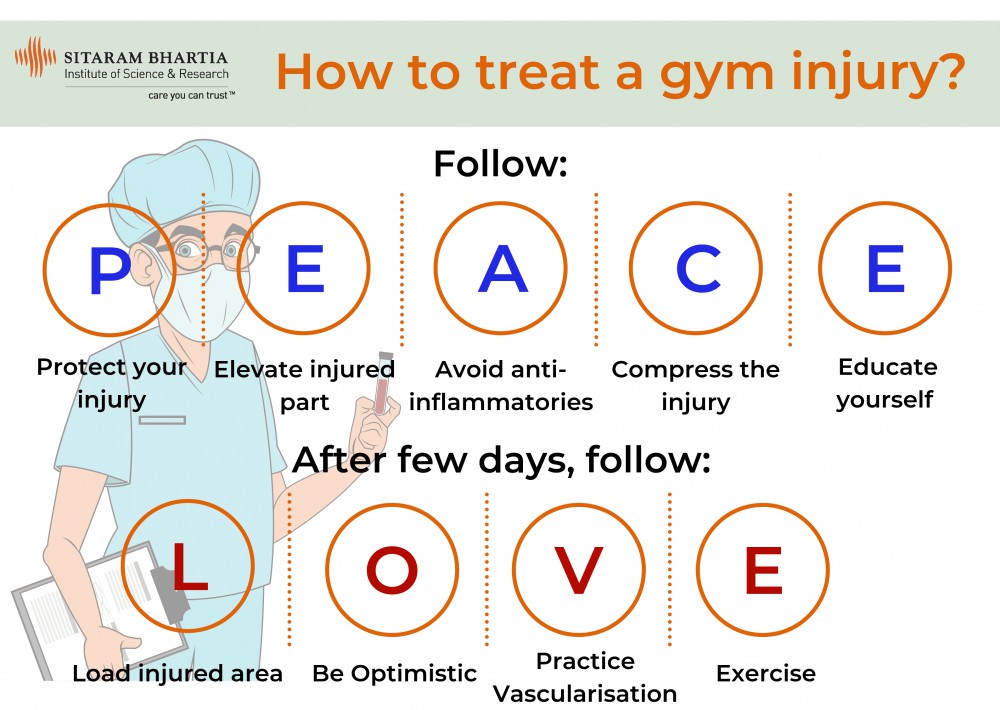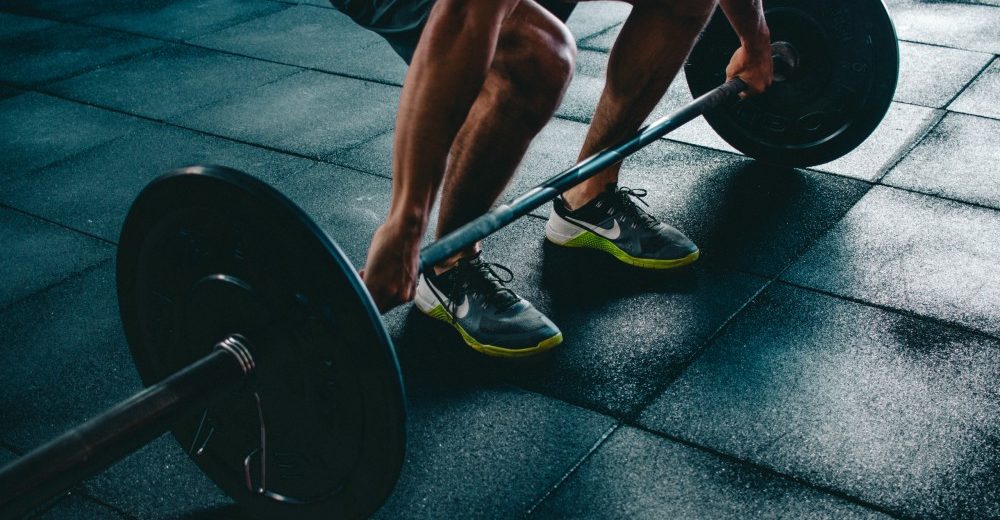How often have you or someone you know complained about a twisted ankle or wrist while doing weight training or exercising?
Gym injuries or the injuries you acquire while working out in the gym are fairly common among fitness enthusiasts.
Dr. Aman Sachdeva, Consultant and Head, Physiotherapy at Sitaram Bhartia Hospital, says – “Injuries while working out are common but what we need to do is pay heed to our body’s needs and not ignore persistent pain in any part of our body.“
“Finding out the cause of the acquired gym injury and examining the affected area properly is very important because you never know how severely you may have injured yourself. A detailed physical assessment can help us find out how much damage has been caused to the affected muscles or joints.”
Working out or exercising is associated with a lot of muscles and ligaments in our body. Harm or trauma to any of these may result in a gym injury.
“Most common cause of gym injuries is the overuse of a group of muscles. Sometimes we don’t realise that we are putting more pressure on a particular body part than it can naturally withstand.”
But why you acquired a gym injury most often depends on the type of injury.
What are the types of gym injuries?
There are four common types of gym injuries people may experience:
Overuse Injuries
Overuse injuries, which are the most common, result from putting excessive and repetitive stress on a particular muscle group. “By putting stress on a body part again and again, it causes trauma to the muscles, tendons, cartilage, ligaments and bones present there,” Dr. Aman says.
There are a couple of factors that increase your chances of developing an overuse injury while working out.
“When you exercise with an incorrect posture or you exercise constantly without giving sufficient time to your body parts to recover after the workout session, you are more likely to get an overuse injury. It also happens when you focus on training only one group of muscles without training the group opposite to it.”
Trauma Injuries
Trauma injuries are those which occur when any body part gets hit by an impactful blunt force like a kick, fall or blow. Impact of the trauma damages the soft tissue leading to contusions, bruises and concussions.
Dr. Aman continues, “In this type of injury, you will notice swelling and discolouration in the body part that has been hit followed by pain.”
Sprains and Strains
How many times have you heard your gym friend talk about a sprain he got in his ankle?
Getting a sprain or strain is very common while exercising but these are very different from each other.
Sprain is a stretch or tear in a ligament. Dr. Aman explains, “ligaments are flexible bands of fibrous tissues connecting bones to bones, bones to joints and bones to cartilage. When these get torn or stretched, it results in a sprain, most likely in ankles, knees and wrists.”
On the other hand, a strain occurs when a particular muscle gets injured due to a pull or twist. This type of injury can happen when people don’t warm up or properly stretch their bodies enough before working out.
“You can also get a strain while jogging or doing weight training.”
Some common types of strains you may come across while gymming:
- Golfer’s elbow
- Tennis elbow
- Lumbar strain
- Jumper’s knee
- Runner’s knee
Fractures and Dislocations
Fracture occurs when any bone breaks due to a strong blow or fall. “You may also develop small cracks in the bone due to repeatedly putting pressure on a particular body part. These are known as stress fractures,” Dr. Aman adds.
On the other hand, when the ends of two connected bones separate from each other, it is known as dislocation. This happens when the ligament is hit by some extreme force or blow.
Now that we are aware of how and why we might develop gym injuries during work out, let us know the course of treatment we should follow in that case.
How to treat gym injuries?
Before discussing treatment options, it is important to know when to seek help from a physiotherapist.
Dr. Aman says, “When you develop a gym injury, you are most likely to experience some pain, swelling, tenderness or discolouration in the particular area. You may also feel that your muscles in that area have become sore or stiff with restricted movement.”
“But the important thing to note is that stiffness in muscles after working out is common but when that stiffness turns into pain or inflammation, it is best to rush to a doctor.”
The standard treatment plan that is followed to treat gym injuries is known as P.E.A.C.E. and L.O.V.E.
P for Protection
Avoid activities and movements that increase pain during the first few days after injury.
E for Elevation
Elevate the injured body part at a height above your heart level helps drain fluids from that area. This helps reduce swelling and hence pain.
A for Avoiding Anti-Inflammatories
Avoid anti-inflammatory medications as they can negatively affect the healing process.
C for Compression
Apply pressure on the injured area by wrapping a bandage around it. But don’t wrap it too tightly as then it may block blood circulation to that area.
E for Education
Physiotherapists should properly educate the patient about his/her injury as well as about the right way to treat it.
After a few days of getting the injury, one should start with L.O.V.E.
L for Loading
Allow your pain to be your guide and accordingly put load on the injured area without impacting the injury. This helps in the repairing process.
O for Optimism
Condition your brain for optimal recovery by thinking positively and being confident that your injury is going to get better soon.
V for Vascularisation
Increase blood supply to the injured part by doing cardiovascular exercises without affecting the injury.
E for Exercise
Do light exercises including the injured area. This helps in building strength and mobility in that part.

“It is important to note that if we take proper preventive measures, these gym injuries can be easily avoided.”
Preventive measures to avoid gym injuries
Some tips you can follow to prevent getting injured while working out:
- Do proper warm up – Always ensure that you are warmed up properly before starting your exercise regime. Also give your body time to cool off after every work out session.
- Stretch – Stretch regularly before exercising. Often when we work out everyday, our muscles become stiff and tight. Stretching helps preserve their flexibility and reduces the risk of sustaining an injury.
- Use good equipment – Using good equipment is the first step towards fitness. Ensure that you only wear well-fitted, supportive, good quality shoes for running or gymming.
- Maintain the right posture – Make sure that whenever you are doing a particular exercise, you are maintaining the correct posture under your instructor’s guidance. Posture makes all the difference when it comes to getting results after gymming or sustaining injuries.
- Give your body rest – Most fitness enthusiasts think that they will achieve quick results by exercising continuously but that does more harm than good. Chances of getting injured increases when you are exhausted and dehydrated as it affects your concentration. Give your body a chance to sufficiently recover after every session.
- Pay heed to your body – Stay alert and identify any symptoms you may experience while or after working out.
Regular exercise or gymming is undoubtedly good for our body. Exercise helps keep us healthy and keep diseases at bay. But we need to make sure we do it the right way so as to not harm our body.

